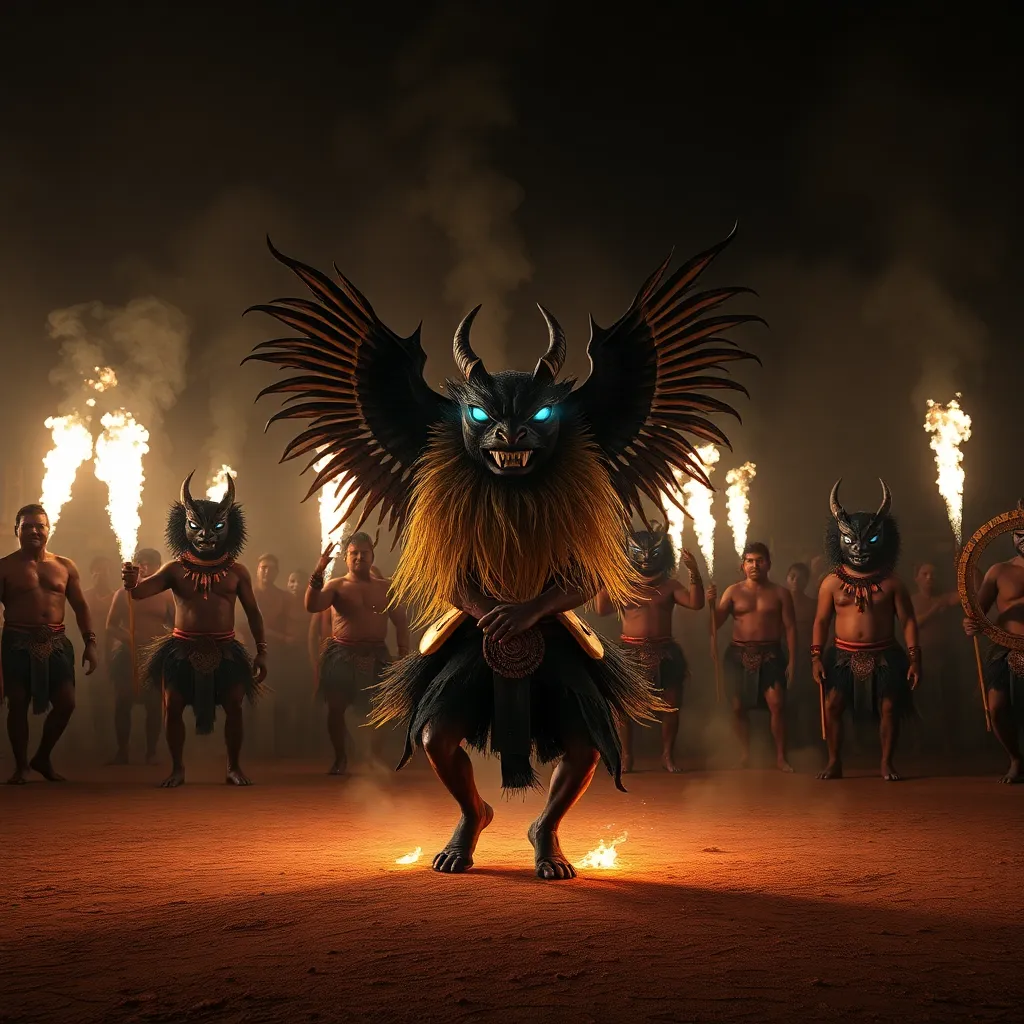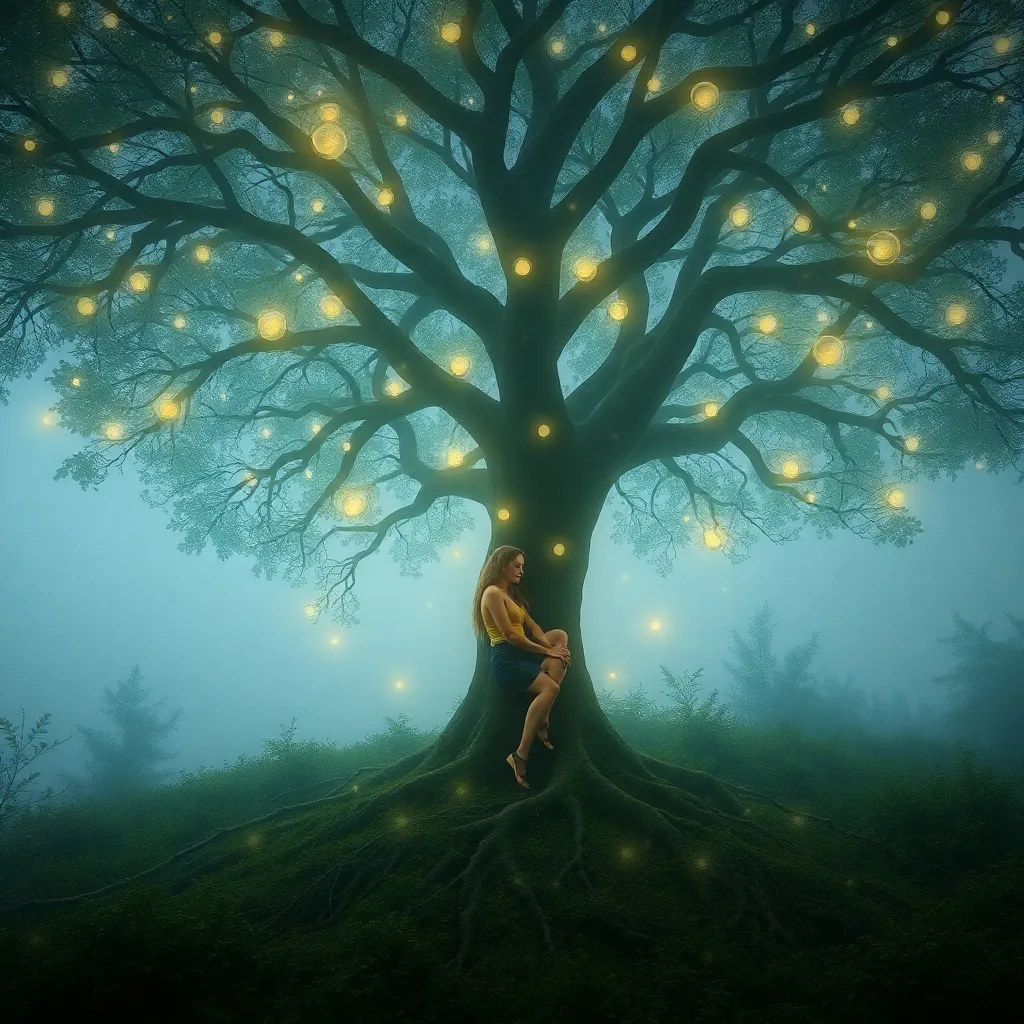The Oni’s Dance: Exploring the Rituals and Symbolism of Oni-related Festivals
I. Introduction to Oni in Japanese Culture
The term Oni refers to a class of supernatural beings in Japanese folklore, often depicted as ogre-like creatures with red or blue skin, sharp horns, and wild hair. They are known for their fierce and malevolent nature, yet they also possess a more complex role in the cultural tapestry of Japan.
The origins of Oni can be traced back to ancient Japanese mythology, where they were feared as harbingers of disaster and chaos. However, over time, their image has evolved, encompassing both the roles of protectors and scaring away evil spirits. This duality reflects the intricate relationship between good and evil in Japanese culture.
Oni hold significant importance in the cultural identity of Japan. They are not just figures of fear but also embody the struggle against malevolence and the celebration of community resilience.
II. Historical Context of Oni-related Festivals
The evolution of Oni festivals can be seen as a reflection of Japan’s historical and social changes. Initially, these festivals were rooted in agrarian rituals aimed at ensuring good harvests and warding off misfortune. Over the centuries, they transformed into vibrant celebrations that showcase the community’s spirit and culture.
Regional variations abound in Oni-related celebrations. For instance, the Setsubun festival, celebrated nationwide, involves the tossing of roasted soybeans to drive away Oni and invite good fortune. In contrast, other local festivals may incorporate unique rituals and performances that highlight local traditions and interpretations of Oni.
Historical events, such as natural disasters or social upheaval, have also influenced festival practices. Communities have adapted their celebrations to reflect resilience and unity in the face of adversity.
III. Key Rituals Associated with Oni Festivals
Typical rituals performed during Oni festivals often include:
- Bean-throwing ceremonies (Mame-maki) to expel evil spirits.
- Purification rites to cleanse participants and the environment.
- Processions featuring Oni masks and costumes.
The significance of purification rites is profound, as they symbolize the cleansing of negative energy and the welcoming of good fortune. These rites often involve the use of salt, water, and other natural elements to create a sacred space.
The role of dance and music is crucial in these celebrations. Traditional dances, such as the Awa Odori, incorporate Oni themes and are performed with lively rhythms, bringing communities together in joyous celebration.
IV. Symbolism of Oni in Rituals
Oni are often interpreted in various ways during rituals. They can be seen as:
- Protectors who ward off evil and bring good luck.
- Harbingers of disaster, reminding communities of the balance between good and evil.
Colors and masks used in these rituals carry deep meanings. For instance, red Oni symbolize protection and strength, while blue Oni often represent chaos or misfortune. The masks themselves are crafted with intricate designs that reflect the character and intention of the Oni they represent.
The dual nature of Oni—embodying both good and evil—serves as a reminder of the complexities of human existence, emphasizing the need for balance and harmony within the community.
V. Community Involvement and Participation
The organization of Oni festivals relies heavily on local communities. Residents come together to plan, prepare, and execute various aspects of the celebrations, from constructing floats to choreographing dances. This collaboration fosters a sense of belonging and pride among community members.
Generational transmission of traditions is vital in these festivals. Elders pass down stories, rituals, and techniques to younger generations, ensuring the continuity of cultural practices. This transmission creates a link between the past and the present, allowing communities to maintain their unique identities.
Moreover, the impact of festivals on community cohesion is significant. They serve as occasions for reunion and solidarity, where families and friends gather to celebrate their shared heritage and strengthen social bonds.
VI. Modern Interpretations and Adaptations
In contemporary society, Oni-related festivals have seen adaptations of traditional rituals to resonate with modern audiences. For instance, some festivals now incorporate elements of pop culture, blending traditional motifs with modern artistic expressions.
The influence of globalization has also led to the introduction of international visitors and participants, which enriches the festivals with diverse perspectives and practices. This exposure can lead to a deeper appreciation and understanding of the cultural significance of Oni.
Technology and social media play a pivotal role in promoting these festivals. Online platforms have become essential for sharing information, attracting attendees, and showcasing the vibrant nature of the celebrations, thereby extending their reach beyond local boundaries.
VII. Case Studies of Notable Oni Festivals
Examining notable Oni festivals provides insight into their unique characteristics and practices:
A. The Setsubun Festival: History and Practices
The Setsubun festival, celebrated on February 3rd, marks the transition from winter to spring. Participants engage in the ritual of throwing roasted soybeans to drive away Oni and invite good fortune, accompanied by traditional chants.
B. The Awa Odori Festival: Oni’s Influence on Dance
The Awa Odori, held in Tokushima, is renowned for its lively dances that often incorporate themes of Oni. Participants wear traditional costumes and perform rhythmic dances that celebrate community spirit.
C. Other Regional Festivals and Their Unique Characteristics
Other regional festivals, such as the Kumamoto Castle Festival and the Oni Matsuri in various towns, showcase local interpretations of Oni, featuring unique rituals, dances, and community engagement.
VIII. Conclusion: The Ongoing Legacy of Oni Festivals
Reflecting on the cultural significance of Oni reveals their integral role in Japanese society. They serve as a bridge between the past and the present, highlighting the importance of community, tradition, and resilience.
As we look to the future, the preservation of Oni-related festivals remains crucial. These celebrations not only honor ancestral customs but also adapt to contemporary contexts, ensuring that they remain relevant for future generations.
In conclusion, the ongoing legacy of Oni festivals signifies the enduring power of cultural traditions to unite communities, celebrate heritage, and navigate the complexities of existence in a rapidly changing world.
https://www.youtube.com/watch?v=GA4MTGgqP2I



